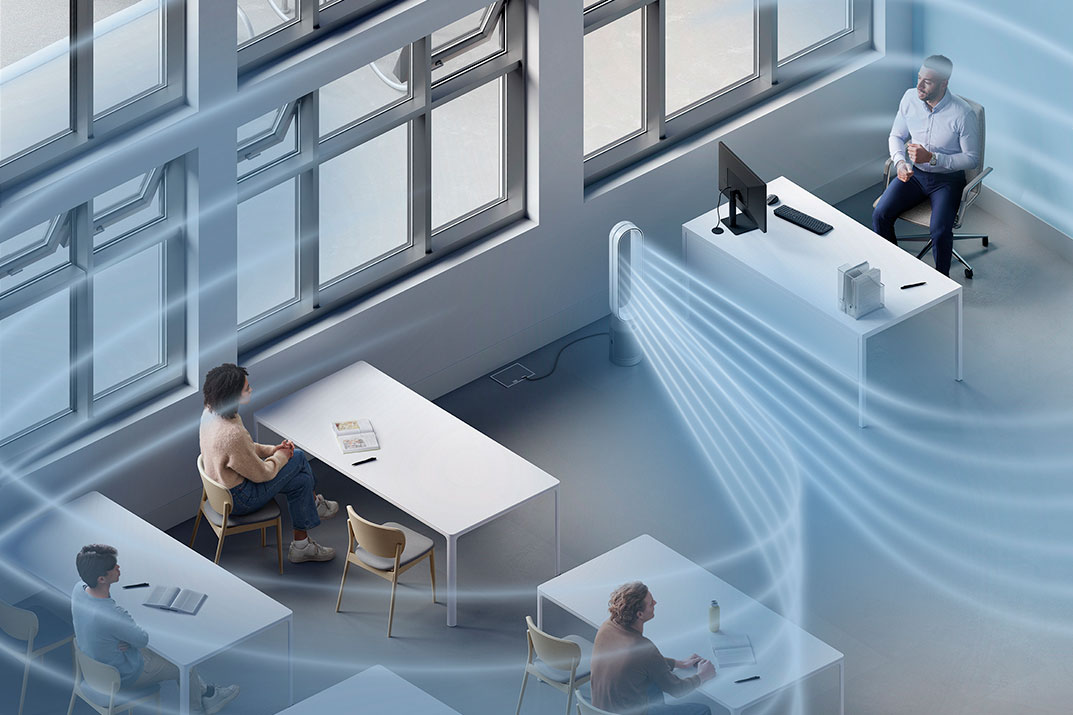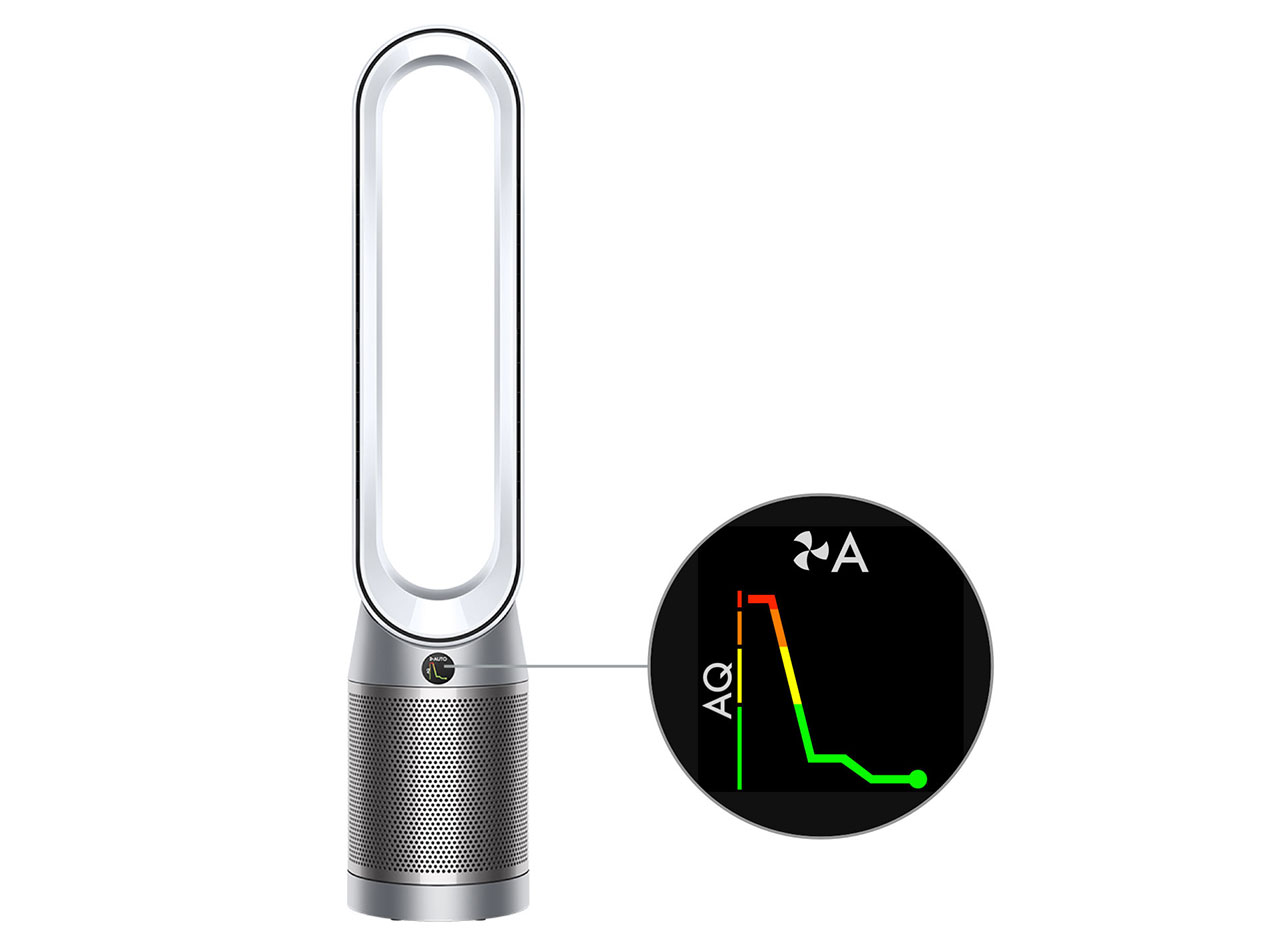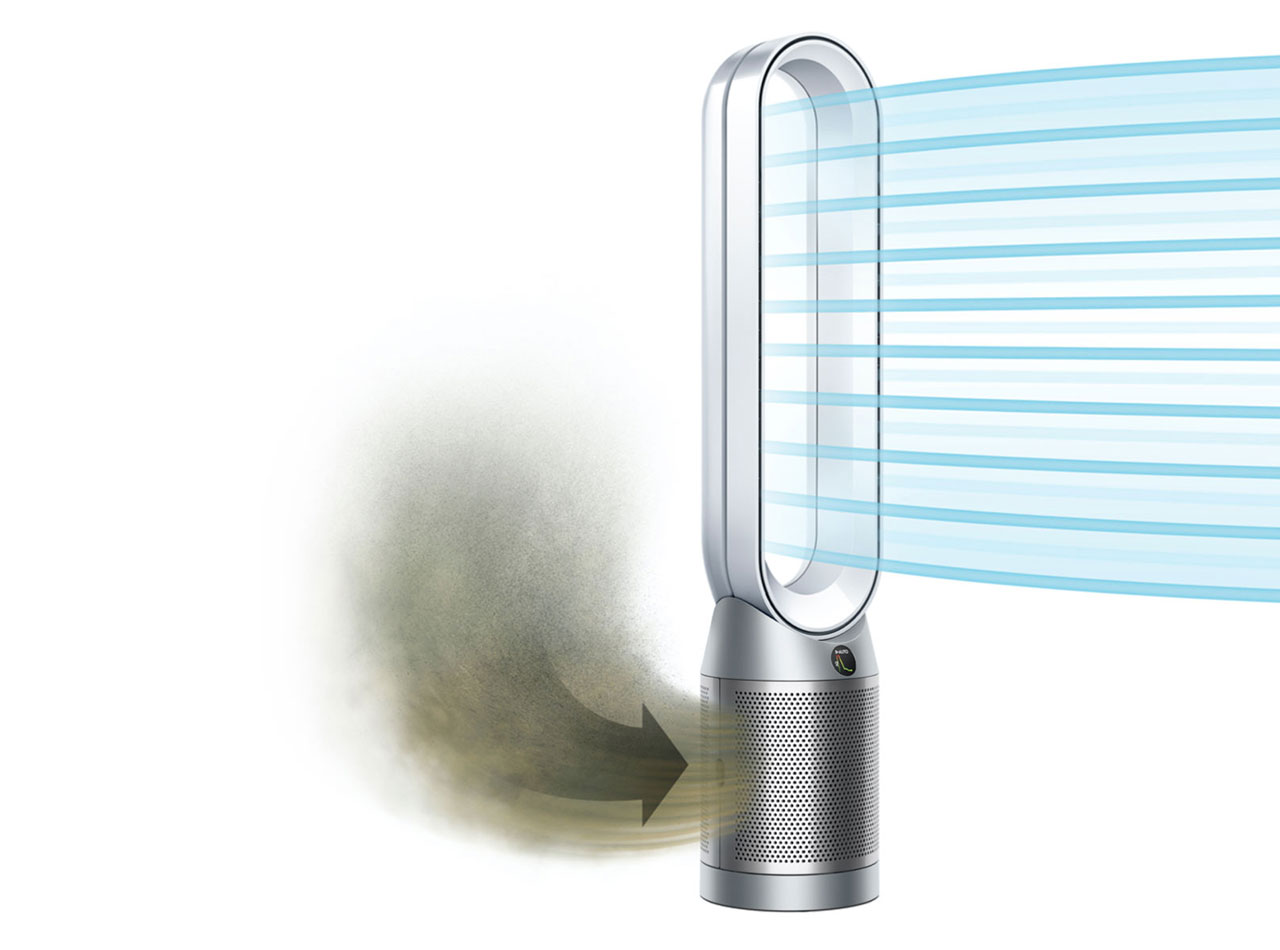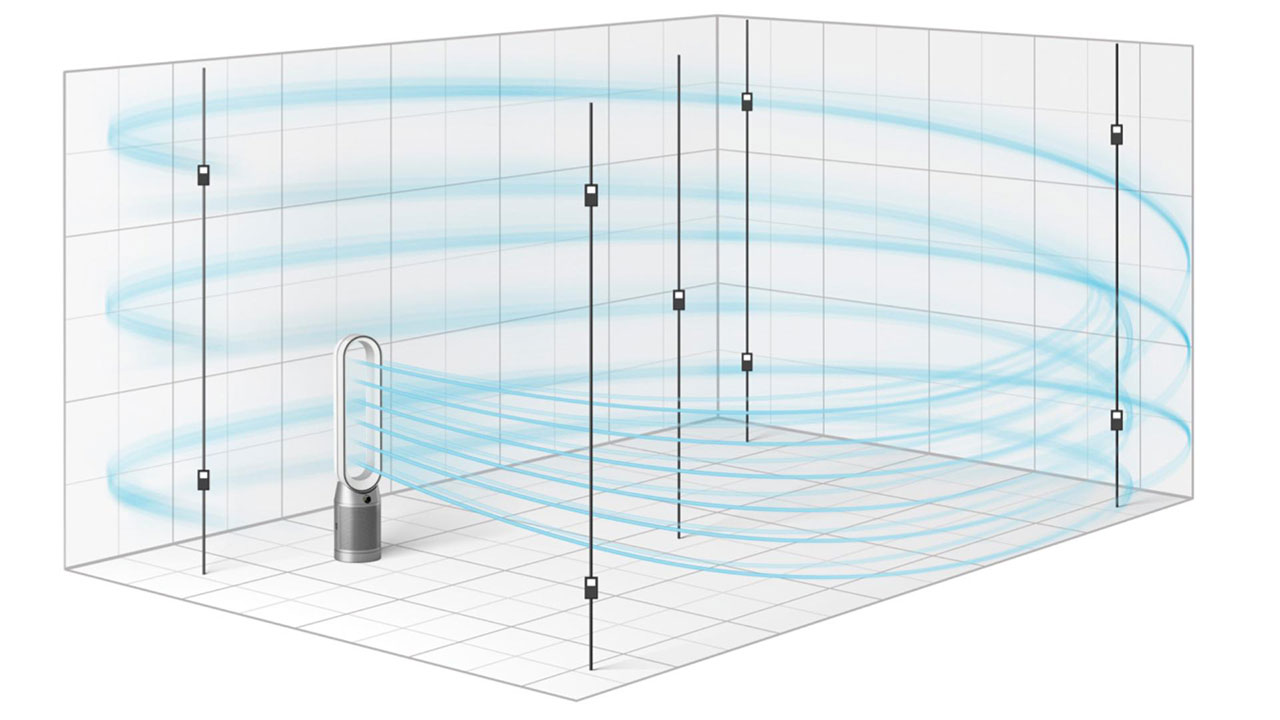Key benefits of Dyson purifiers with HEPA filters in the current climate

Dyson's TP7A captures ultrafine dust, allergens, and the H1N1 virus1
With many people spending increasing amounts of time indoors, maintaining a cleaner and healthier space is an important priority. Everyday, humans breathe up to 9,000 litres of air2. We consume more air everyday than any other substance, yet we often don’t think about what is in the air we breathe – in fact it can be up to 5 times more polluted than the air outside.
Dyson purifiers remove pollutants like VOCs, NO2 and dust and allergens as well as particles the size of bacteria and viruses up to 0.1 microns3 to create cleaner air indoors and help support overall wellbeing.
Interested but wondering where to start? Our experienced and responsive team are here to listen and understand your requirements, quote the optimum solution, and take care of the logistics. Contact the team.

Sense
An LCD screen shows the particles and gases the Dyson purifier is automatically sensing in real time using a unique Dyson algorithm. Lasers measure and identify fine particles. Another sensor detects the amount of VOCs (Volatile Organic Compounds), such as benzene and formaldehyde, and NO2 (Nitrogen Dioxide) present. Another sensor measures relative humidity and temperature.

Capture
With Dyson purifiers, as well as capturing larger particle pollutants like pollen and pet dander, we test our fully sealed HEPA filtration (H13 standard4) on particles as small as PM0.1 (100nm), and we achieve 99.95% efficiency at this size3. This includes particles the size of bacteria and some viruses such as H1N11.

Project
Using Dyson Air Multiplier™ Technology, the machine can project purified air to every corner of the room. Auto mode enables the machine to maintain a preferred room temperature and air quality levels, while the machine can be entirely controlled by the Dyson Link App5.
Dyson testing goes further than the industry standard (CADR)
Dyson engineers designed the POLAR test to challenge the industry standard - measuring filtration, sensing and circulation to ensure the whole room is purified properly.

CADR is not a measure of purification performance in a real-size room 28.5m3^
An additional fan boosts circulation. Only one sensor measures air quality.

Dyson's POLAR test goes further to measure purification throughout a real-sized room 81m3^
No additional fans. Nine different sensors to measure even-room air quality.
1 Whole machine tested by independent third-party laboratory Airmid (Ireland) in 28.5m³ test chamber pre-conditioned to 20±3C and RH 50±5%. Influenza A (H1N1) aerosolised in the test chamber and airborne concentration observed for the duration of 60 minutes under maximum Fan speed. Achieved 99% efficacy but real-life efficacy may differ depending on actual environment and Fan speed. Tested on Influenza A (H1N1) only.
2 ‘How your lungs get the job done’ American Lung Association, 2017.
3 Tested for filtration efficiency at 0.1 microns (EN1822, ISO29463). Gas capture rates vary.
4 Particle challenge by DEHS oil specified in EN1822 within a chamber specified in ASTM F3150. Tested in Max Mode at IBR US, for whole machine efficiency above 99.95%.
5 Requires device to run app, Wi-Fi or mobile data, Bluetooth 4.0 support, and iOS version 10 or Android version 5 (or above). Standard data and messaging rates may apply. The Bluetooth® word mark and logos are registered trademarks owned by the Bluetooth. SIG, Inc. and any use of such marks by Dyson is under license.
^ In maximum setting. Tested for air projection (DTM801), purification coverage in an 81m³ room (TM-003711).

